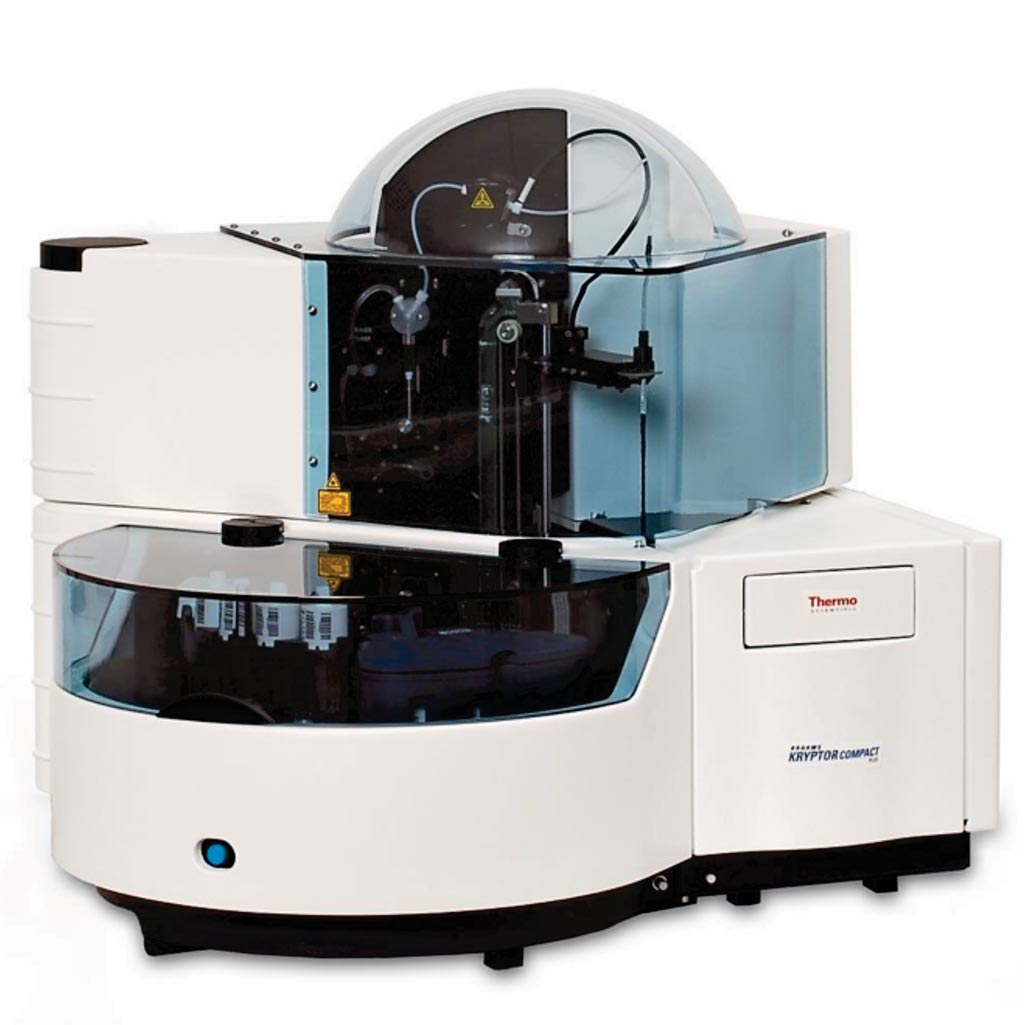Immunoassay Systems Compared for Trisomy Screenings
By LabMedica International staff writers
Posted on 25 Jul 2017
The biochemical serum markers free β-human chorionic gonadotropin (hCGβ) and pregnancy associated plasma protein A (PAPP-A) are used in screening for trisomy 21 (T21), trisomy 18 (T18), and trisomy 13 (T13) during the first trimester.Posted on 25 Jul 2017
The biochemical analysis of hCGβ and PAPP-A can be performed on different analytical systems and it is important not only to know the analytical variation but also the screen positive rate and the detection rate for these different systems.

Image: The BRAHMS Kryptor fully automated immunoanalyzer (Photo courtesy of Thermo Fisher Scientific).
Clinical biochemists at the Copenhagen University Hospital Hvidovre (Denmark) collected serum samples from 944 singleton pregnant women attending for first trimester during a two-month period between April 2014 and June 2014. The median maternal age was 31 years (range 17–47 years) and the median gestational age was 11+2 (range 8+1 − 14+0 weeks of gestation) at time of sampling. Serum samples from 70 women carrying a fetus affected by T21 (n=50), T18 (n=14) or T13 (n=6) were compared.
Blood samples were collected into tubes with clot activator and gel separator. The hCGβ and PAPP-A concentrations were routinely analyzed on Kryptor fully automated immunoanalyzer at the time of testing. After storage at −80 °C, the samples were re-analyzed on Cobas 6000 in the autumn of 2015. The measurement principle of Kryptor is time-resolved amplified cryptate emission technology while the Cobas employs electro-chemiluminescence immunoassay. The karyotype was determined with either amniocentesis or chorionic villus sampling or by karyotyping after birth. All measurements of hCGβ and PAPP-A were transformed to multiples of the median (MoM) values for each analytical platform.
The scientists found that hCGβ MoM and PAPP-A MoM results from Kryptor correlated well with those from Cobas. However for the screening population, the hCGβ and PAPP-A results in MoM from Kryptor and Cobas were significantly lower on Cobas when compared to Kryptor. The number of pregnant women with a risk above 1:300 for T21 was 48 for both Cobas and Kryptor, although a few patients only had a high risk with one of the methods. Overall, the screen positive rate was 5.1% for both instruments. In the trisomy groups the calculated risks for T21, T18, and T13 agreed well between Cobas and Kryptor.
The authors concluded that although, in the screening population, hCGβ and PAPP-A measurements performed on Cobas were significantly lower than on Kryptor, but the same screen positive rate of 5.1% was found. The two analytical instruments performed equally well in detecting pregnancies with T21, T18, or T13 karyotypes when hCGβ and PAPP-A were included in the risk calculation. The study was published on July 11, 2017, in the journal Practical Laboratory Medicine.
Related Links:
Copenhagen University Hospital Hvidovre













